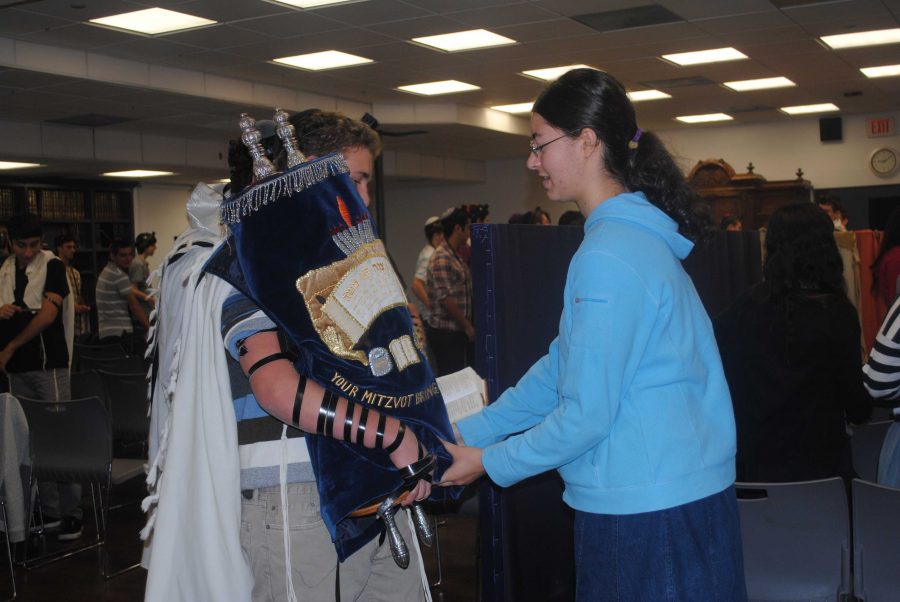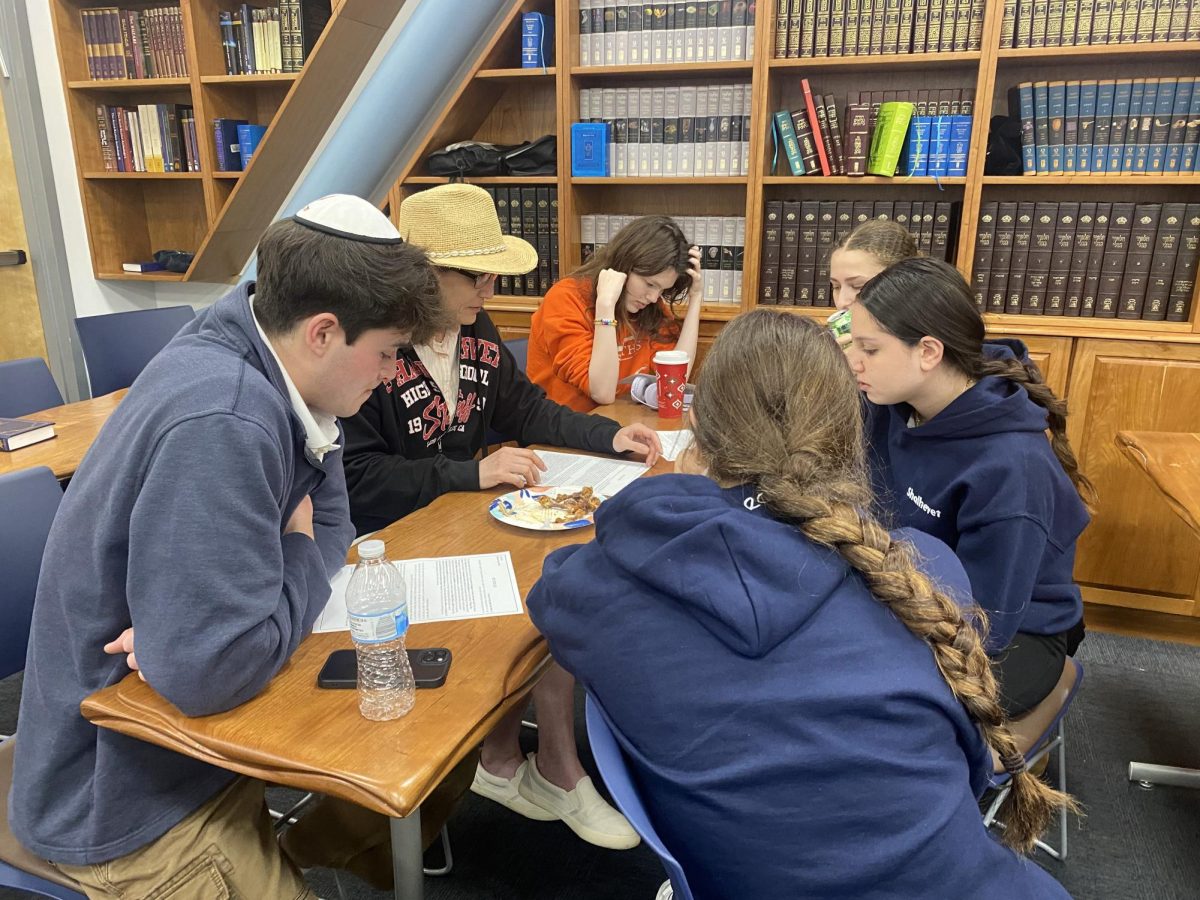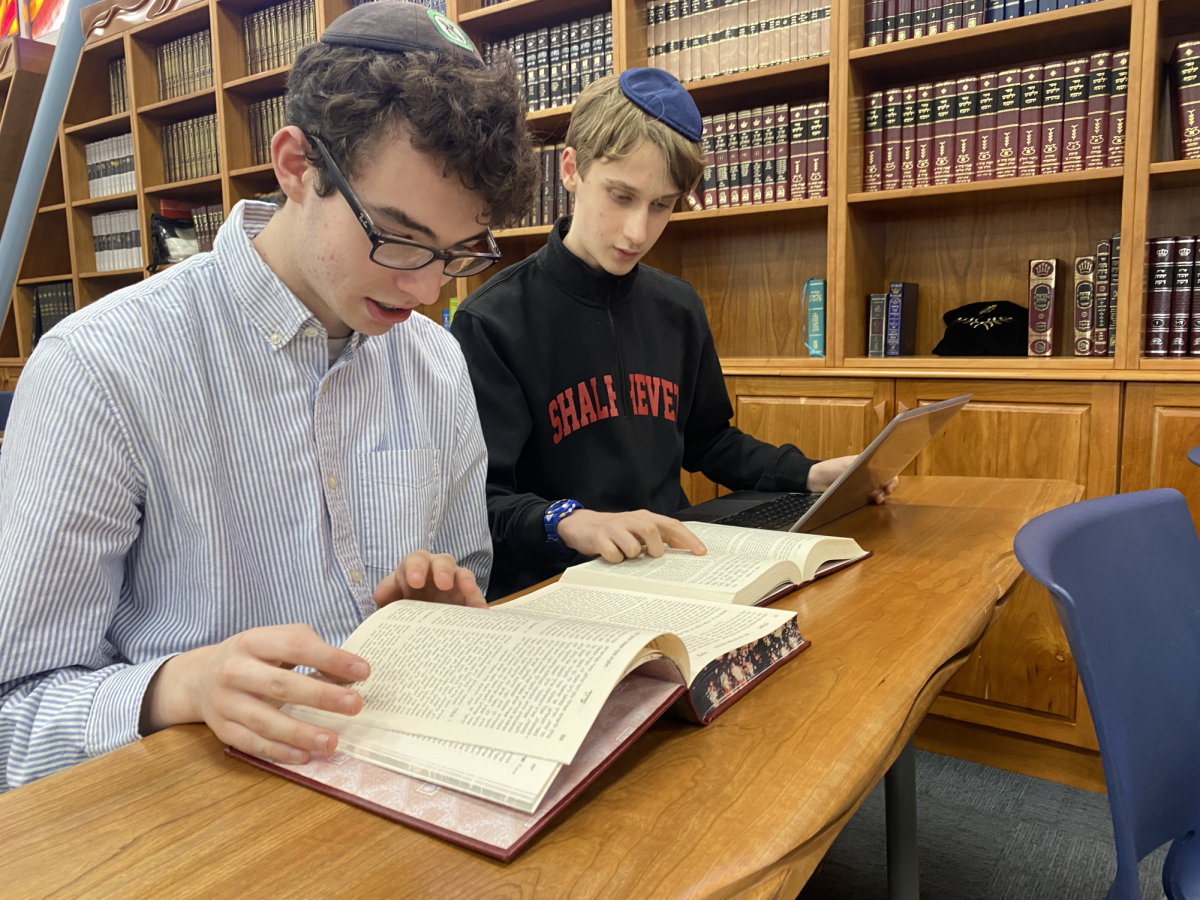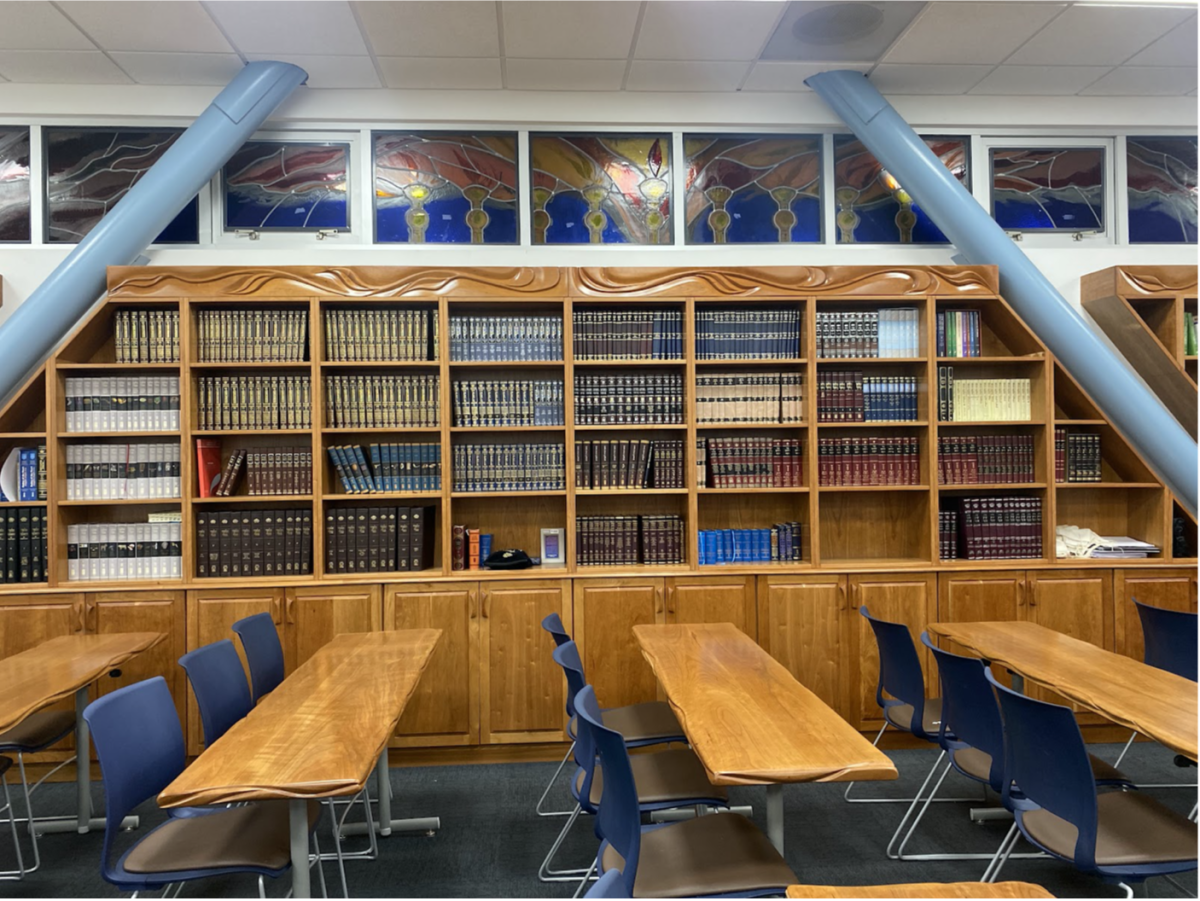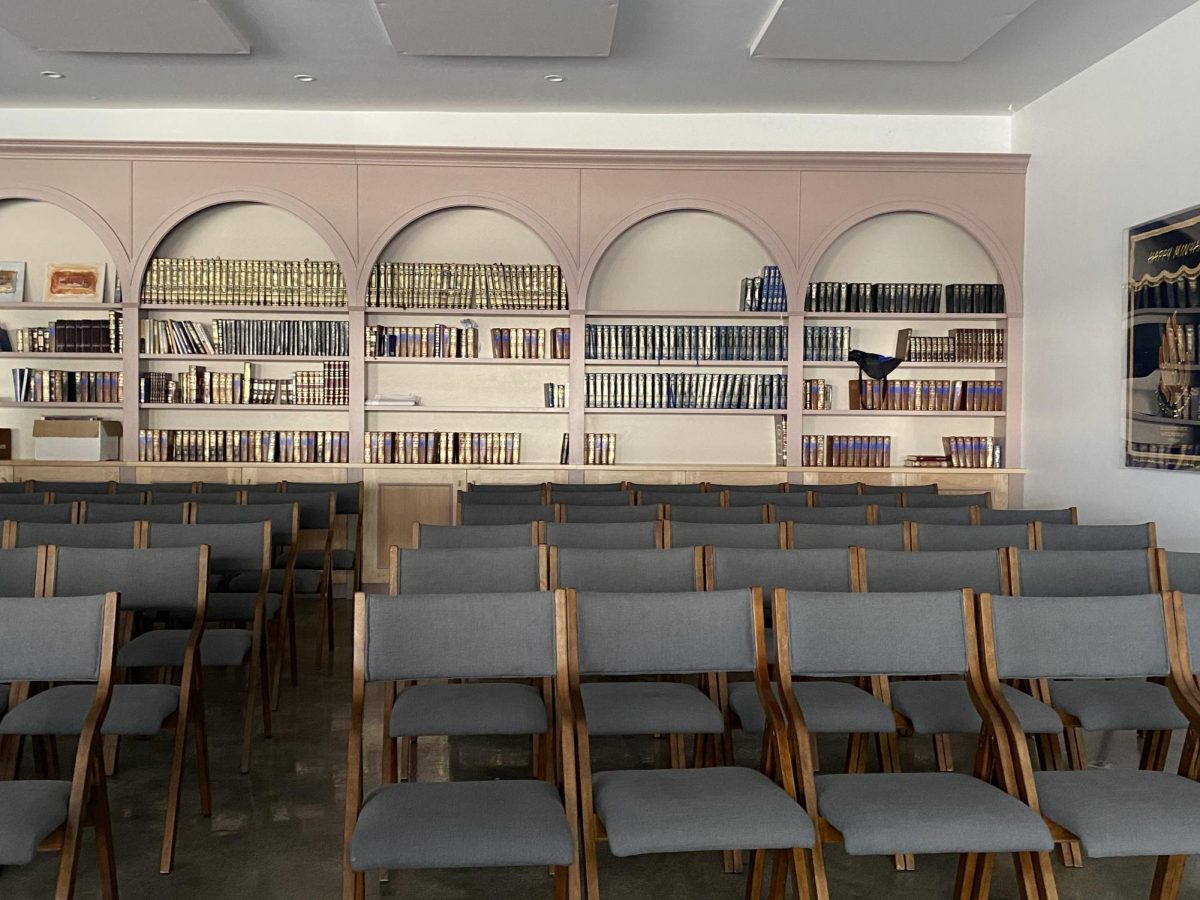Head of School Rabbi Ari Segal held an after-school meeting Tuesday to begin a process through which he plans to decide whether to start a Sephardic minyan and, if so, whether girls would be allowed to carry the Torah there.
In attendance at the meeting, which was by invitation, were Rabbi Segal, Judaic Curriculum Coordinator Mr. Noam Weissman, along with students who the administration thought were interested in the subject. They were juniors Adam Wannon, Jordan Banafsheha, Jojo Fallas and Rachel Kenner, senior Leah Katz, and sophomore Aviva Prinz – the junior boys who had been asking for a Sephardic minyan, and three girls who have actively carried the Torah in the past.
“They came up with proposals,” Rabbi Segal said after the meeting was over. “I just need to do the research to see if they’re feasible.”
According to Jordan Banafsheha and Leah Katz who were present, the group first discussed possible ways for Sephardic students to daven according to their customs. Jordan, Adam Wannon, and Jojo Fallas, the junior boys requesting a change, proposed that an independent, co-ed, Sephardic minyan meet daily in Mr. Feld’s double-sized classroom.
Rabbi Segal said he would ultimately approve or reject this proposal depending mainly on finding a faculty advisor along with other practical concerns, Jordan and Leah reported.
Discussed next was whether girls would carry the Torah in that minyan, should it be approved. Someone proposed that the Torah not be carried through any section, but taken directly to the bima by the Chazan.
This will also be decided by Rabbi Segal.
“It was a good meeting,” Rabbi Segal said. “I just have to research supervision and space issues I’ll get back to them in one or two days.”
Earlier in the week, Rabbi Segal had told the Boilling Point that he would be making a final decision after meeting with students and faculty, and that he expected all sides to have to make compromises.
Responding to questions e-mailed to him over Sukkot break, the head of school wrote that the decision would take into account a range of viewpoints.
“As with many areas in the school (aside from mitzvot aseh and loh taaseh, educational/curricular standards, personnel decisions and a few other core areas) the decision will be a cooperative effort between student leadership and the faculty,” Rabbi Segal wrote.
In an interview Monday, he added that until he decides, the upperclassmen minyan would be led in Sephardic Nusach each Monday while the other Torah-reading day, Thursday, would remain Ashkenazi, and girls will continue to carry the Torah both days.
“The main question is: how can we make this work for as many people as possible within the Shalhevet mission?” Rabbi Segal said. “Once something is determined, we’ll make an announcement to the student body. Until then, we’re keeping status quo, in the sense that women will carry the Torah, but Sephardic minyan will meet once a week on Thursdays.”
The issue has caused active controversy for almost two months, ever since a group of boys began complaining that they were uncomfortable seeing girls carry the Torah at the upperclass minyan in the Beit Midrash.
Some of the same boys had also been asking for a Sephardic minyan, but a contentious Town Hall on the subject Sept. 15 focused on the girls carrying the Torah and the issue has been debated continuously since then, even with the intervening breaks for Rosh Hashanah and Sukkot.
Having a girl carry the Torah up the girls’ side of the mechitza is not directly related to Sephardic or Ashkenazic nusach (style), but the students requesting Sephardic davening were the same ones who were contesting girls’ contact with the Torah.
Their gripe was mostly that because it isn’t done that way in their home synagogues, it was uncomfortable and distracting for them to see during a prayer service.
In a previous decision made by Judaic Studies Principal Rabbi Ari Leubitz, the boys who had requested a Sephardic minyan would lead the upperclassmen in a Sephardic nusach on Mondays and Thursdays, and would decide themselves if they would hand the Torah to a female student to be carried through the girl’s section. In interviews, they said they would not — but in practice, they did.
The decision was only implemented for one day before Rabbi Leubitz reduced the Sephardic nusach to one day a week. Rabbi Leubitz acknowledged the debate going on over girls carrying the Torah, but said he cut the Sephardic variations to once a week primarily because Sephardic liturgy was unknown to too many students.
“I think changing the nusach twice a week was probably too much,” Rabbi Leubitz explained, referring to previous plans to have Sephardic nusach on both Torah-reading days, Mondays and Thursdays. “Too many kids don’t know the Sephardic texts, it’s too much — let’s try this once a week.”
“I don’t think the women’s carrying of the Torah is a prime reason for decision-making,” he added.
Proponents of women carrying the Torah say that there is no halachic, or legal, ruling against it, and that it helps girls feel involved in davening. Opponents mostly cited the importance of keeping tradition, and discomfort with the practice. Some students cited halachic uncertainty as a reason.
“My only problem is that it doesn’t follow our tradition, and I don’t think it’s right to stray away from traditions,” said Adam Wannon.
Agreed Michael Lenett, “It takes away from my davening experience. I have this spiritual connection, and when I see the girls carrying the Torah up their aisle, I lose it.”
At Town Hall, some said girls wanted to carry the Torah just to prove their equality with men, therefore using the Torah as a means to an end, which is against halacha.
Girls disagreed.
“I am a feminist, but I’m not doing it for feminist reasons,” said senior Deanna Grunfeld, who sometimes carries the Torah in the Bet Midrash minyan. “I actually feel a spiritual connection.”
Some boys supported the girls.
“When I’m praying, I’m not concerned about anyone else, I’m just focusing on myself,” said freshman Alex Schwartz. “So if they want to carry the Torah, I think we should let them.”
All the teachers who spoke and at least half the students argued in favor of women carrying the Torah. When it was over, Agenda Chair Leona Fallas took an informal vote on whether a separate minyan could be established for those who wanted male-only carrying. A strong majority voted yes.
“If they want a Sephardic minyan where they would not be made uncomfortable by women carrying the Torah, they have my blessing,” Leah Katz said later. “However, I really don’t think that their discomfort should be able to make this drastic change in the structure of the entire minyan.”
Related: New Sephardic minyan lets students feel at home 11/12/2011
VIDEO: Two problems solved at once as Sephardic minyan debuts 11/11/2011
Related: About 50 students attend school’s first Sephardic minyan 11/7/2011
EDITORIAL: On women and Torah, Shalhevet should lead 11/4/2011
Related: Shalhevet stands alone among Orthodox schools in letting girls carry Torah, survey finds 11/3/2011
Related: Tradition may rule, but law says girls may carry the Torah 11/3/2011
Related: Sephardic minyan approved; no changes to Ashkenazic minyans 10/28/2011
Related: Girls will no longer carry Torah at junior-senior minyan 10/7/2011

